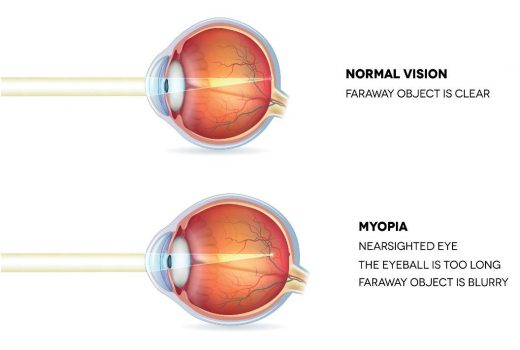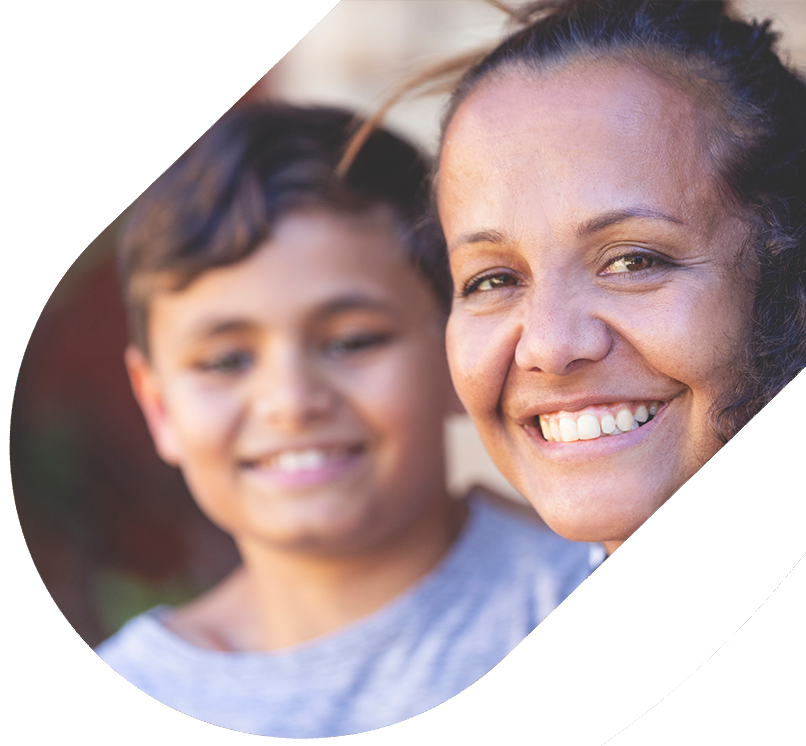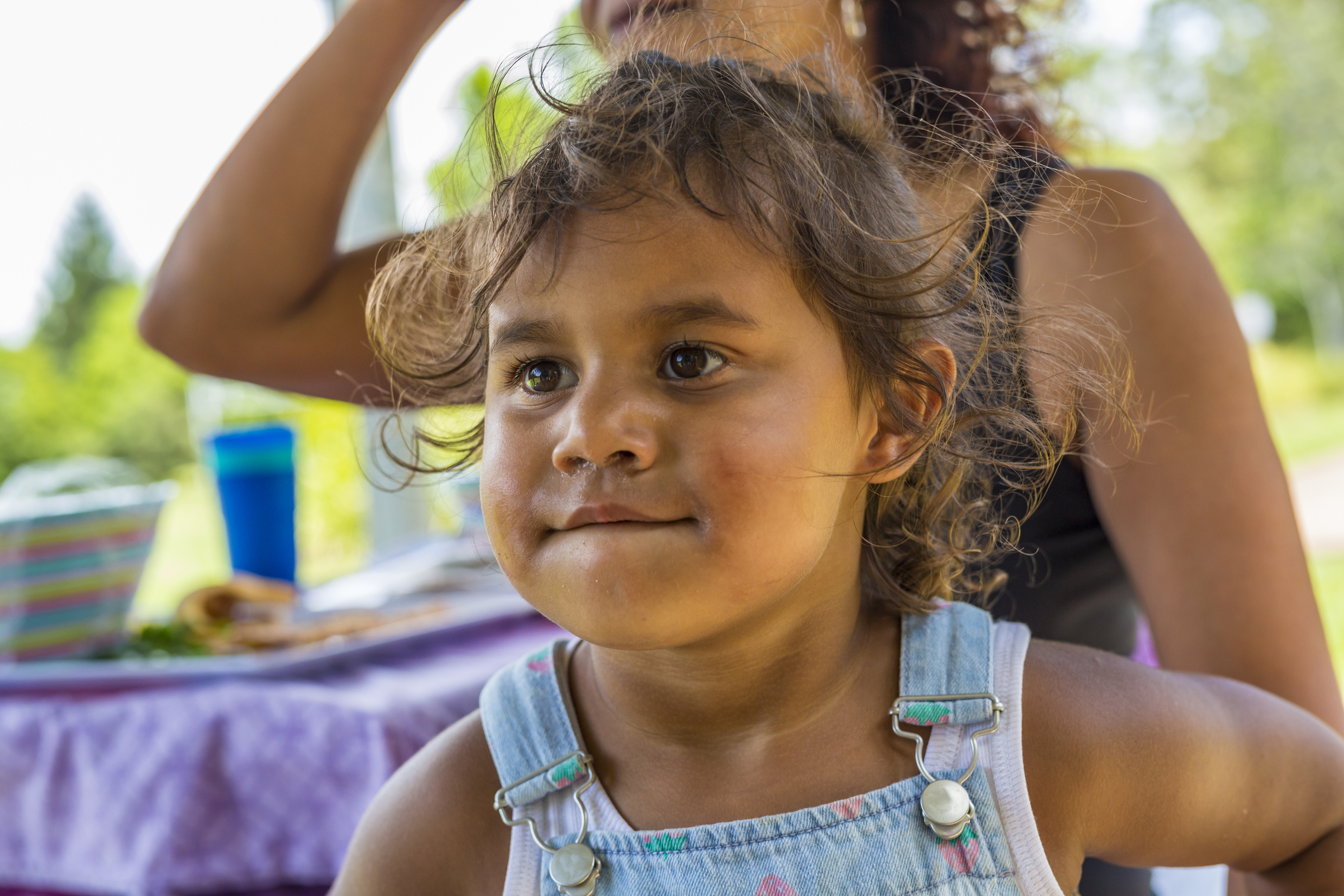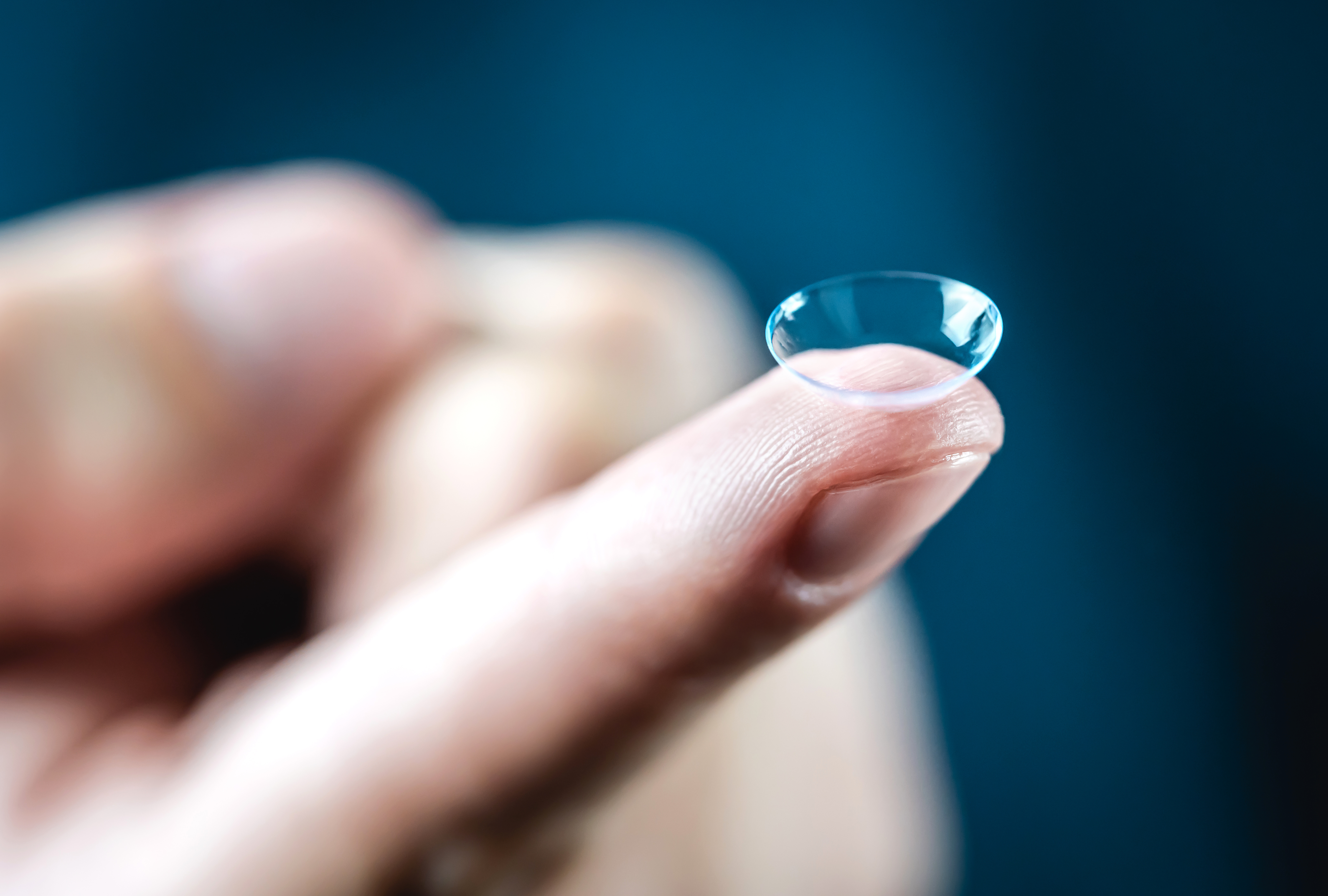What is Myopia?
Myopia, commonly known as short-sightedness, makes distant objects difficult to see clearly. Affecting about 25% of people in Australia, it is a common condition, and has been becoming more common over the past few decades. In childhood myopia, the eyeball grows longer and longer (increasing “axial length”) which causes reduced distance vision, increasing glasses prescription and increased risk of eye disease. Measuring the axial length of the eye provides us with a useful indicator of the effectiveness of your treatment. This device is available at our Carlton clinic.
Current evidence supports a number of treatment methods for reducing the progression of myopia. While these treatments aim to prevent further worsening of the myopia, they are not able to reverse existing myopia.


The importance of Myopia Management
In addition to having worsening eyesight without glasses, and requiring stronger, thicker or more expensive lenses, the long-term risk of eye disease also increases with longer axial lengths. Many studies show that higher levels of myopia are associated with an increased risk of more serious eye problems later in life (such as retinal detachment, glaucoma and early cataracts).
Correcting myopia with conventional distance glasses, contact lenses or refractive surgery (laser surgery or lens implants), does not reduce these risks. Slowing myopia progression and axial lengthening is likely to reduce your child’s risk of developing these conditions.
What can be done to slow progression?
Due to the long-term eye problems associated with high myopia and its increasing prevalence, it’s important to take action to slow the progression of myopia.
Studies have found that increased time outside helps delay the onset on myopia. Two to three hours per day spent outdoors is recommended. Increasing time outside seems to have less effect once myopia has already developed. The association between myopia development and increased near work and screen-time is less clear, but we recommend good lighting and working distance for all near work, and to take regular breaks from near work.
Multifocal lenses specifically designed to slow myopia progression have existed for years, however their effect on progression has been limited. More recently, new lens options are now more available which use small “lenslets” in the periphery of the lens to send “stop” signals to prevent continued lengthening of the eye. Early studies show good effect on slowing myopia progression.
Multifocal soft contact lenses, designed to manage myopia progression, also aim to better correct peripheral optics while providing clear central vision. These special purpose multifocal lenses are available in daily disposable and monthly lens options, however CL wear for most hours of the day is necessary to provide the maximum effect. For all contact lens options, your child will need to demonstrate appropriate handling of the lenses before progressing with these options.
Orthokeratology involves using custom-made contact lenses to reshape the cornea and temporarily correct myopia. These oxygen-permeable contact lenses are worn overnight and subtly alter the shape of the cornea to give clear vision after the lenses are removed in the morning, and throughout the day. There are limits to the amount of myopia and astigmatism that can be corrected with this process.
Atropine has been used in ophthalmology for many decades. It causes a relaxing effect on the pupil muscles (constrictor) and focusing muscles (ciliary muscle). Recently, studies have shown atropine in low concentrations to have an effective role in reducing the progression of myopia. Whilst higher dose atropine can cause symptoms of near blur and increased sensitivity to light these symptoms are rarely reported in low-dose atropine eye drops. Low dose atropine can be prescribed alone or can also be added to other myopia treatments. Your optometrist will discuss which dose of atropine is best suited depending on the risk and rate of progression.

Your appointment
An appointment at the ACO’s Myopia Clinic will:
> assess your child’s symptoms
> determine the severity using specialised equipment
> provide a diagnosis and tailored treatment plan
Based on the findings of your examination your optometrist will tailor a treatment plan to suit your child’s needs.
Our paediatric optometrists apply the clinical gold standard approach to diagnosis and management, to reduce the burden of myopia.













